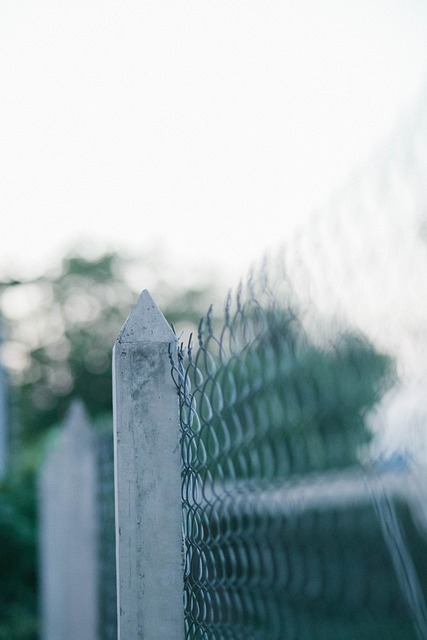For New Bedford, Massachusetts homeowners looking to enhance their outdoor spaces, DIY fence installation offers a cost-effective and rewarding project. This comprehensive guide provides essential tips for navigating the process, from selecting the perfect fence options tailored to your property’s unique characteristics, to mastering each step of installation. By covering everything from measuring and planning to final touches, we empower homeowners to create secure, aesthetically pleasing fences that define their outdoor oases.
- Understanding Your Fence Options for New Bedford Homes
- Measuring and Planning Your Fence Layout
- Preparing the Ground for Installation
- Step-by-Step Guide to Fence Post Placement
- Attaching Fencing Material: Railing and Panels
- Final Touches: Gate and Hardware Installation
Understanding Your Fence Options for New Bedford Homes
When considering a DIY fence installation in New Bedford, Massachusetts, homeowners have a variety of options to choose from. Wood remains a popular choice for its natural aesthetics and relative affordability. Vinyl fencing is another durable option that requires little maintenance. Chain link fences offer both security and versatility, ideal for homes with children or pets. Before beginning your project, research local building codes regarding fence height, materials, and placement, ensuring your chosen design complies. Additionally, consider the layout of your property: privacy fences may be suitable for secluded areas, while decorative fences can enhance curb appeal in front yards.
Measuring and Planning Your Fence Layout
Before installing your fence, proper planning is key. Start by measuring the perimeter of the area where you want to place the fence. Use a tape measure to ensure accurate measurements, taking into account any curves or corners. Mark these points on the ground with stakes and string for visual reference.
Consider factors like existing structures, trees, and landscaping when designing your fence layout. Create a plan that fits within these constraints while still meeting your desired aesthetic and functionality. This step will save you time and effort during installation, ensuring a smooth and efficient process.
Preparing the Ground for Installation
Before installing your fence, preparing the ground is a crucial step. Clear any debris or vegetation from the area where the fence will be erected. This includes removing branches, bushes, and grass to create a smooth, level surface. Digging a shallow trench along the intended fence line can help ensure proper drainage and prevent water damage later.
Additionally, checking the soil conditions is essential. Loamy or sandy soils are ideal as they allow for easy digging and movement of heavy materials. If your ground is rocky or hard, consider using tools like jackhammers or excavators to create a solid foundation for your fence posts. Proper preparation will make the installation process smoother and contribute to the overall durability of your new fence.
Step-by-Step Guide to Fence Post Placement
When installing a fence, proper post placement is crucial for both the structural integrity and aesthetic appeal of your fence. Start by identifying the exact locations where you want your posts to go. Use measuring tape to mark these spots along the intended fence line. Dig holes at these marked locations, ensuring they are deep enough—typically about one-third of the post’s height—to provide stable support. The size of the holes should accommodate the posts’ diameter; larger holes can lead to uneven settling. Place your posts into the holes, checking their levelness and alignment with the fence line. Fill the holes with concrete, ensuring it completely encases the posts for strength and stability. Allow the concrete to set according to the manufacturer’s instructions before proceeding to the next step.
Attaching Fencing Material: Railing and Panels
When attaching fencing material, whether it’s railing or panels, ensure a secure fit for safety and longevity. Start by aligning the posts with care, making sure they are level and evenly spaced. Use a level to check and adjust as needed before securing them firmly into the ground with concrete. For railings, attach vertical supports at regular intervals, creating a sturdy framework. Panels should be securely fastened to both the posts and rails using appropriate hardware like brackets or nails, following manufacturer guidelines for best results. Regular inspections and maintenance will help keep your fence in top condition.
Final Touches: Gate and Hardware Installation
Once your fence is up and the posts are securely in place, it’s time to focus on the final touches. This includes installing a gate that complements your fence style and adding hardware like latches, hinges, and handles. Measuring and cutting the gate to fit perfectly between the posts ensures both functionality and aesthetic appeal. Choose a design that aligns with your property’s overall look—a wooden swing gate for a traditional feel or a sleek metal option for a modern touch.
When fitting the hardware, ensure all components are securely fastened. Latches should be easy to operate but robust enough to keep intruders out. Consider adding decorative handles or knobs to enhance the gate’s visual appeal while keeping it secure. Regular maintenance, such as greasing hinges and checking latches, will guarantee your gate continues to function smoothly over time.
